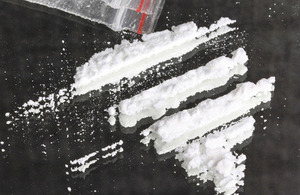Number of young people in specialist substance misuse services falls again
The downward trend in the number of young people in England receiving help for substance misuse problems continued in 2012 to 2013.

According to the latest annual statistics released by Public Health England (PHE), 20,032 under-18s received help for alcohol or drug problems during the year, compared with 20,688 in 2011 to 2012. This reflects the overall decline in alcohol and drug use by young people over recent years.
Cannabis remains the drug for which young people are most likely to seek help. During 2012 to 2013, 13,581 young people sought help from specialist services with cannabis as their main problem drug. Alcohol was the main problem in 4,704 cases; this was down from 5,884 cases in 2011 to 2012. The number of young people with heroin or cocaine as their main problem drug fell to historic lows. However, these declining numbers were countered by increases in the figures for amphetamines (including ‘legal highs’) and the club drugs mephedrone and ecstasy.
Public Health England Director of Alcohol and Drugs Rosanna O’Connor said:
For any young person who gets into difficulty with alcohol or drugs, it’s vital they get the right help and support as quickly as possible. The figures show that specialist services are continuing to respond well to the needs of young people. Waiting times continued to improve with an average wait of just under 2 days to access help, and nearly four-fifths left specialist services having successfully completed their programme.
However while the overall picture on young people’s substance misuse is fairly positive, cannabis and alcohol still present real challenges and services are also having to adapt to cope with the consequences of increased use of club drugs and newer substances.
Adequate investment in young people’s substance misuse services helps prevent today’s troubled young people becoming tomorrow’s dependant alcohol and drug users. PHE will continue to provide the best available data and evidence to support local commissioners in making their case for investment.
Problematic drink and drug use among young people is often a symptom of wider issues that also need to be addressed. There is a continuing need for local areas to provide a full range of services for young people and to ensure those services work in a joined-up way.
The national statistics and trends are analysed in the report Substance Misuse among Young People in England 2012 to 2013. Key findings include:
-
The total number of young people seeing specialist substance misuse services fell for the 4th year running to 20,032 in 2012 to 2013 from a peak of 24,053 in 2008 to 2009.
-
In 2012 to 2013, 13,581 young people presented to specialist services with cannabis as their primary substance (68% of all young people receiving help during the year), up slightly from 13,200 in 2011 to 2012.
-
Alcohol was the primary problem substance in 4,704 cases in 2012 to 2013, down substantially from 5,884 in 2011 to 2012.
-
The number of young people with heroin as their primary substance fell to 175 (down from 211 in 2011 to 2012); for cocaine the number fell to 245 (down from 300 in 2011 to 2012).
-
There were 755 cases in 2012 to 2013 where amphetamines were the primary substance, up from 493 cases in 2011 to 2012; this drug group includes new psychoactive substances, often called ‘legal highs’.
-
The overall number of young people receiving help for problems with ‘club drugs’ increased from 2,007 in 2011 to 2012 to 2,834 in 2012 to 2013 (note: these figures include adjunctive as well as primary use, as young people often use these substances interchangeably). Mephedrone cases went up from 1,065 in 2011 to 2012 to 1,788 in 2012 to 2013 and ecstasy cases from 732 to 997.
-
Waiting times continued to improve, with 99% of young people waiting fewer than three weeks to start getting help and an average wait of just under 2 days.
-
The proportion of under-18s who left specialist services having successfully completed their programme rose to 79% in 2012 to 2013, up from 77% in 2011 to 2012 and from 50% 6 years ago.
Notes to editors
- Public Health England’s mission is to protect and improve the nation’s health and to address inequalities through working with national and local government, the NHS, industry and the voluntary and community sector. PHE is an operationally autonomous executive agency of the Department of Health.
2.The full statistical materials are available at http://www.nta.nhs.uk/statistics.aspx
3.Young people can access information and advice about drugs via the Government’s FRANK website and helpline 24 hours a day, 7 days a week, 365 days a year: visit www.talktofrank.com or call 0300 123 6600.
UK Health Security Agency press office
10 South Colonnade
London
E14 4PU
Email: miranda.askew@phe.gov.uk